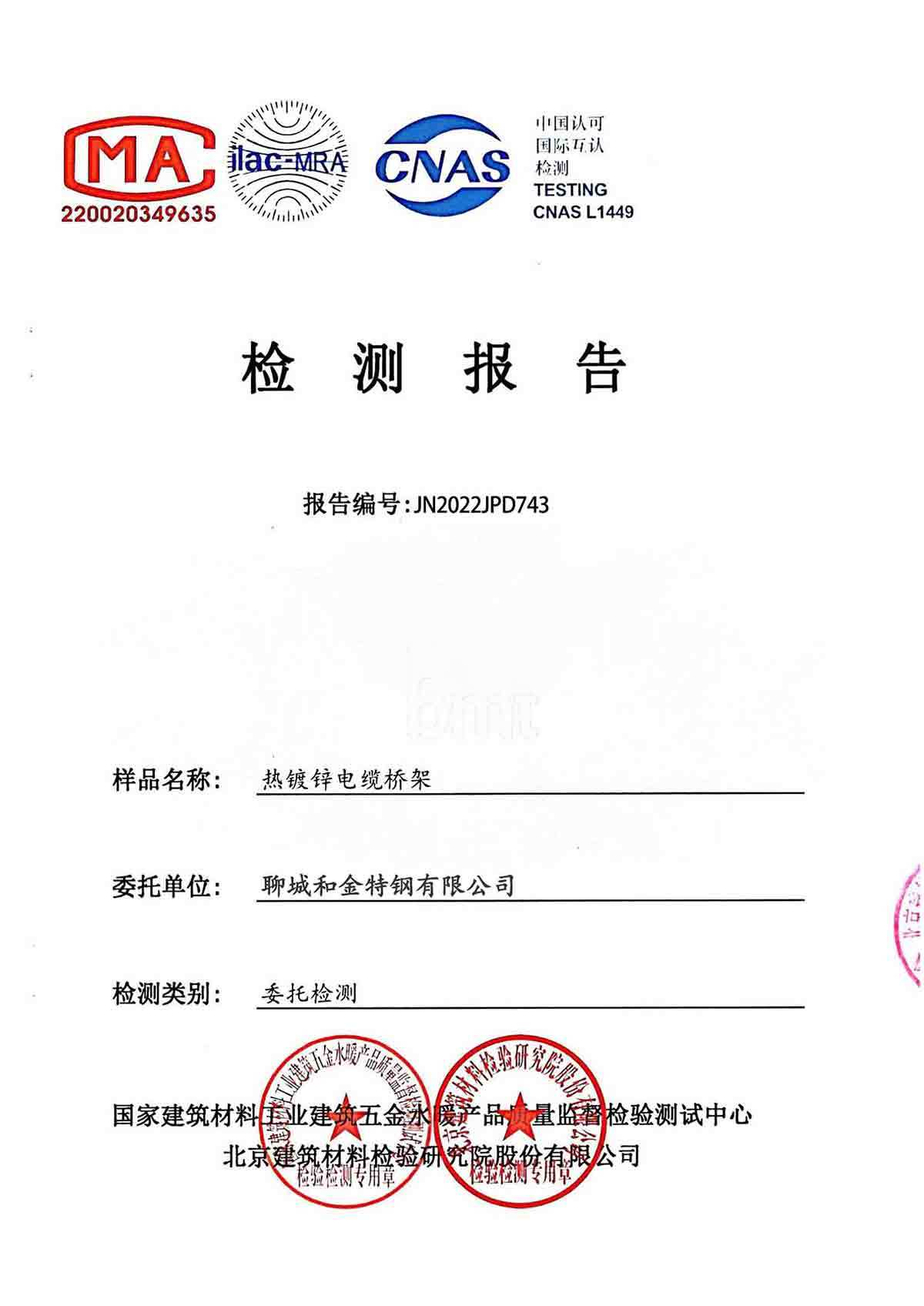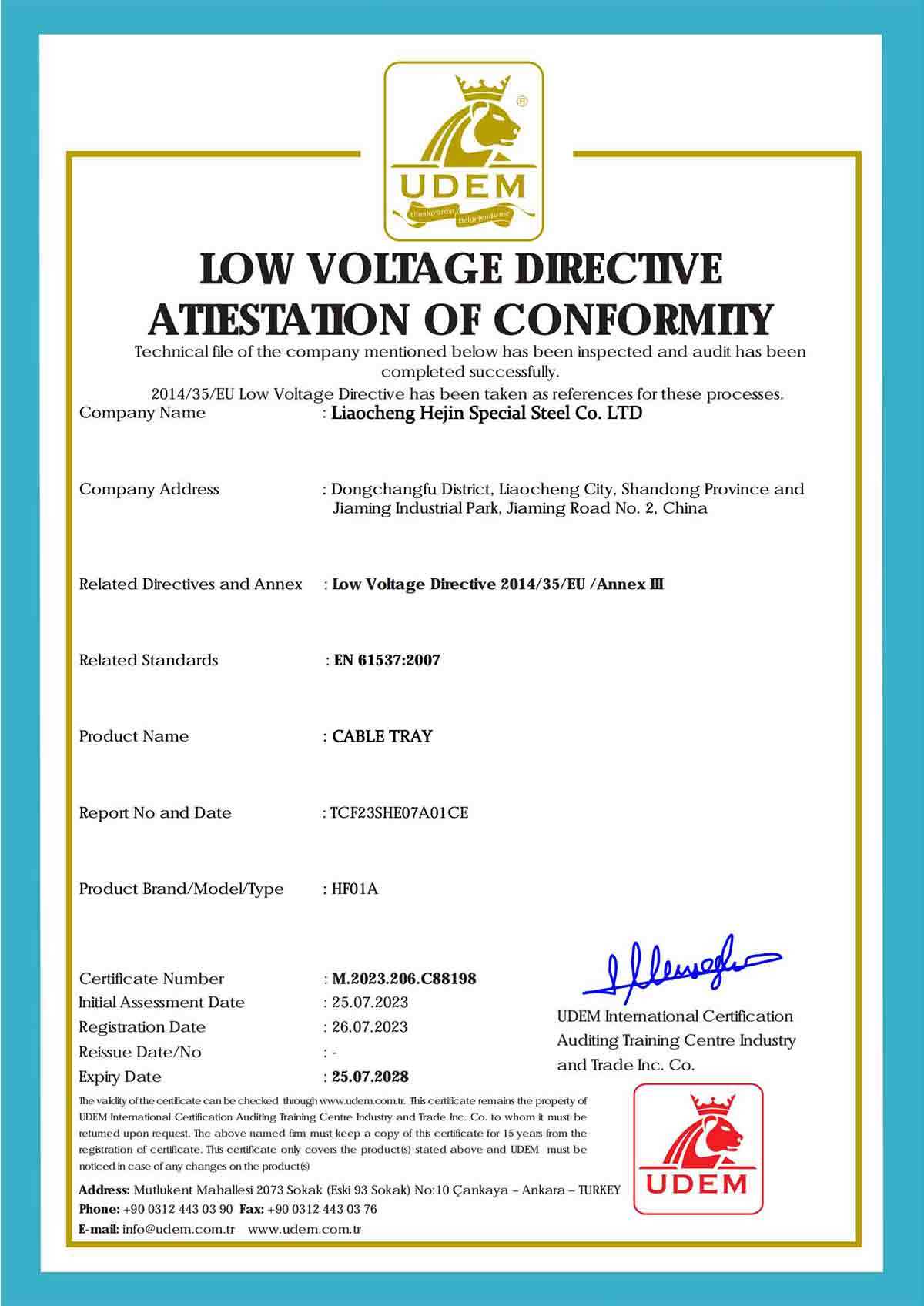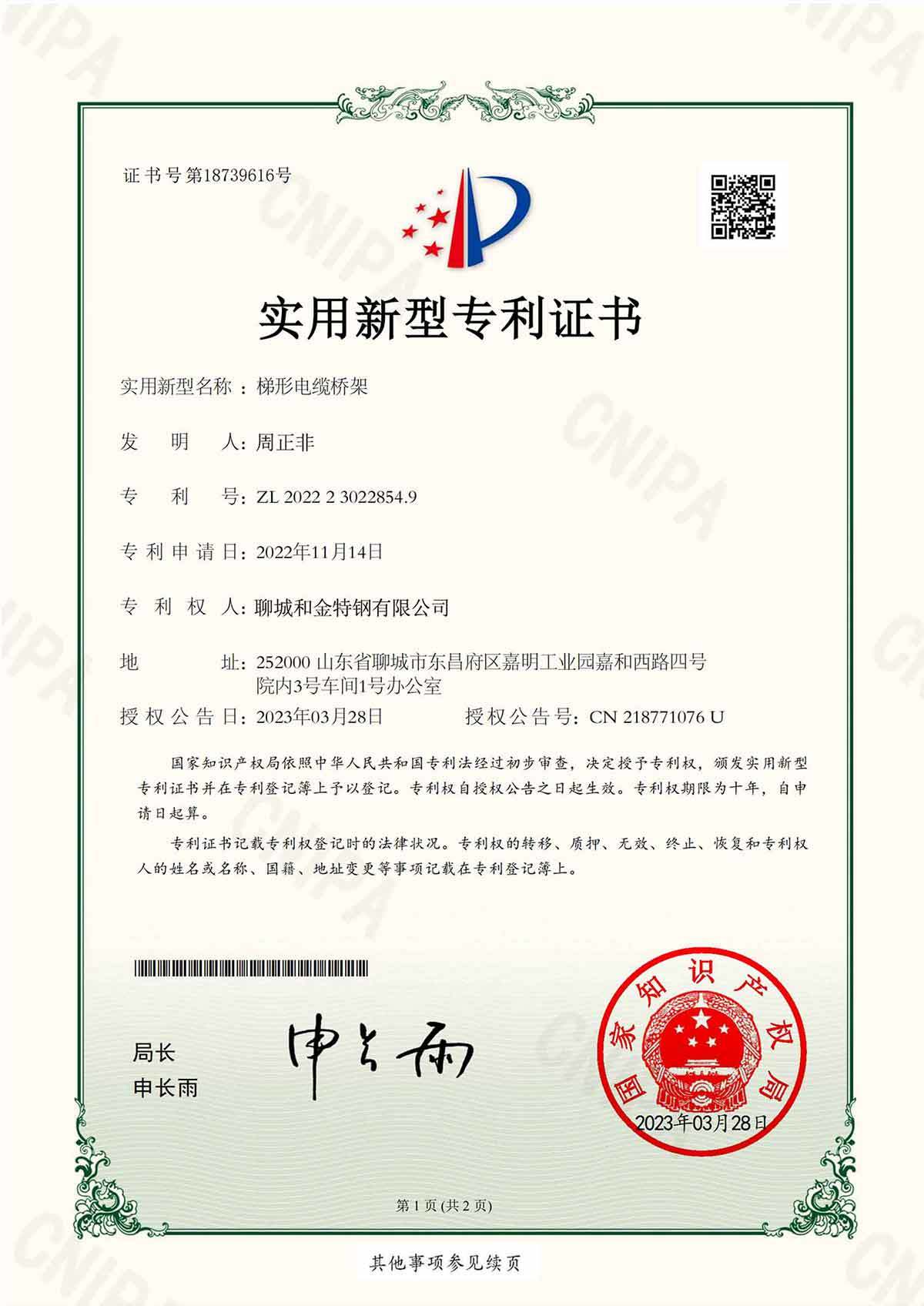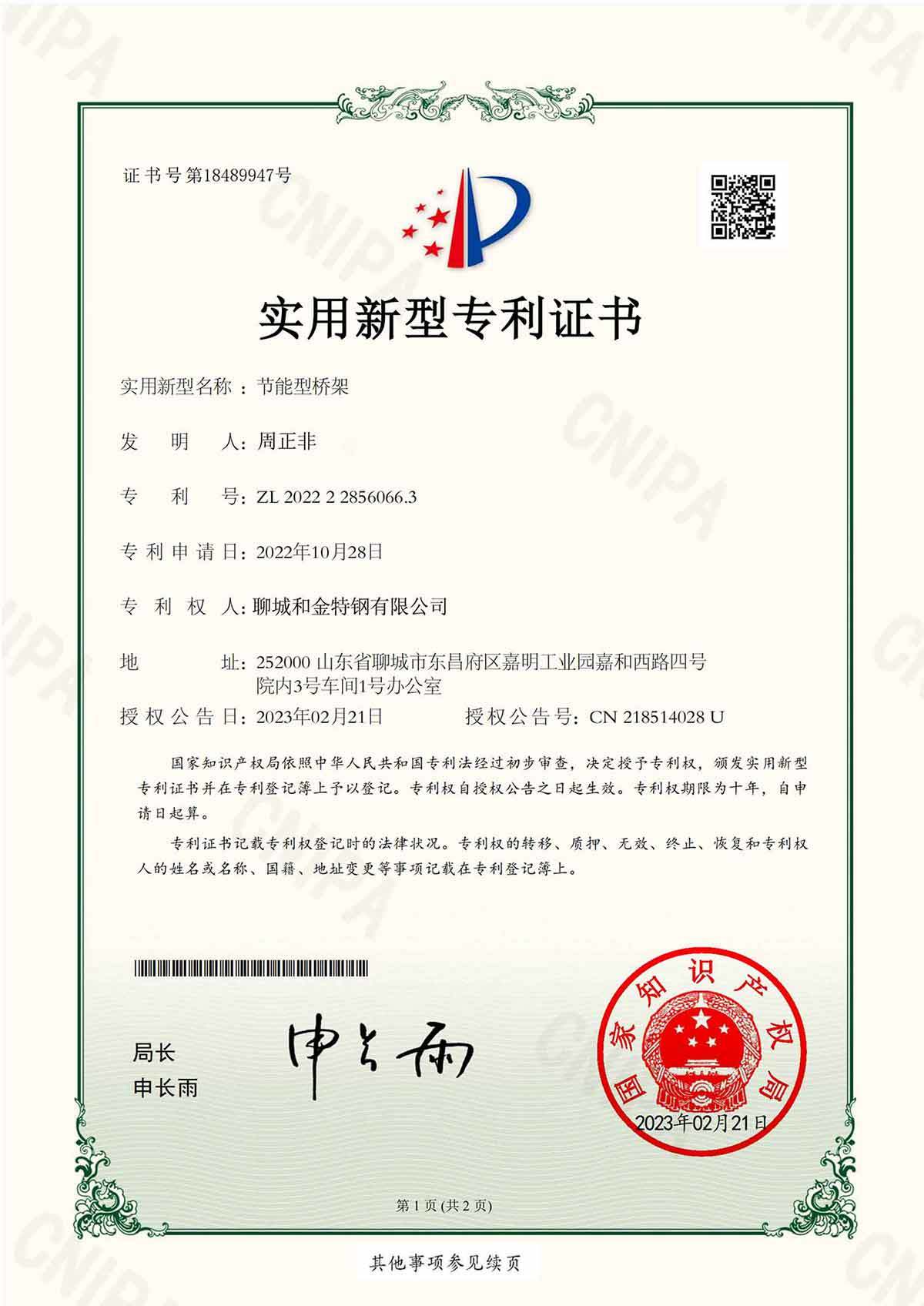Cable Tray
Classification :
Cable Tray
Keywords:
Cable Tray
Cable trays are divided into slot type, tray type, ladder type, and grid type structures, consisting of brackets, brackets, and installation accessories. The bridge inside the building can be erected independently or laid on various buildings (structures) and pipe rack supports. It should reflect the characteristics of simple structure, beautiful appearance, flexible configuration, and convenient maintenance. All parts need to be galvanized and installed on the outdoor bridge outside the building.
Selection of cable tray
1. In engineering design, the layout of the bridge should be comprehensively compared based on factors such as economic rationality, technical feasibility, and operational safety to determine the optimal plan. It should also fully meet the requirements of construction, installation, maintenance, and cable laying.
2. When the cable tray is horizontally laid, the height from the ground should generally not be less than 2.5m. When vertically laid, the part below 1.8m from the ground should be protected with a metal cover plate, except when laid in an electrical dedicated room. If the cable tray is horizontally laid in the equipment interlayer or pedestrian walkway and is below 2.5m, protective grounding measures should be taken.
3. When using cable trays, trunking, and their supports and hangers in corrosive environments, they should be made of corrosion-resistant rigid materials or undergo anti-corrosion treatment. The anti-corrosion treatment method should meet the engineering requirements
Environmental and durability requirements. For places with high requirements for corrosion resistance or cleanliness, aluminum alloy cable trays should be selected.
4. In sections with fire protection requirements, cable ladders and trays can be added with fire-resistant or flame retardant materials such as boards, nets, etc. to form a closed or semi closed structure. Measures such as applying fire-resistant coatings to the surface of the cable tray and its supports and hangers should be taken, and its overall fire resistance performance should meet the requirements of relevant national regulations or standards. Aluminum alloy cable trays should not be used in places with high fire protection requirements in engineering.
5. Cable lines that need to be shielded from electromagnetic interference, or when there are environmental requirements such as outdoor sunlight, oil, corrosive liquids, flammable dust, etc. for external protection, non perforated tray type cable trays should be selected.
6. In places prone to dust accumulation, cable trays should use cover plates; In public passages or outdoor crossing road sections, it is advisable to add pads or use perforated trays on the bottom bridge.
7. Cables with different voltages and purposes should not be laid in the same layer of cable tray.

What is the price of fireproof cable tray?


What is the national standard for the thickness of stainless steel cable tray?


What is the national standard for the thickness of fireproof cable tray?


What is the national standard for the thickness of aluminum alloy cable tray?


What is the national standard for the thickness of spray plastic cable tray?


What is the national standard for the thickness of galvanized cable tray?


What is the price of galvanized cable tray?


The difference between hot-dip galvanized sheet and hot-dip galvanized cable tray


Advantages and disadvantages of aluminum alloy cable tray


What is the national standard for the thickness of hot-dip galvanized cable tray?

Cable trays are divided into slot type, tray type, ladder type, and grid type structures, consisting of brackets, brackets, and installation accessories. The bridge inside the building can be erected independently or laid on various buildings (structures) and pipe rack supports. It should reflect the characteristics of simple structure, beautiful appearance, flexible configuration, and convenient maintenance. All parts need to be galvanized and installed on the outdoor bridge outside the building.
Selection of cable tray
1. In engineering design, the layout of the bridge should be comprehensively compared based on factors such as economic rationality, technical feasibility, and operational safety to determine the optimal plan. It should also fully meet the requirements of construction, installation, maintenance, and cable laying.
2. When the cable tray is horizontally laid, the height from the ground should generally not be less than 2.5m. When vertically laid, the part below 1.8m from the ground should be protected with a metal cover plate, except when laid in an electrical dedicated room. If the cable tray is horizontally laid in the equipment interlayer or pedestrian walkway and is below 2.5m, protective grounding measures should be taken.
3. When using cable trays, trunking, and their supports and hangers in corrosive environments, they should be made of corrosion-resistant rigid materials or undergo anti-corrosion treatment. The anti-corrosion treatment method should meet the engineering requirements
Environmental and durability requirements. For places with high requirements for corrosion resistance or cleanliness, aluminum alloy cable trays should be selected.
4. In sections with fire protection requirements, cable ladders and trays can be added with fire-resistant or flame retardant materials such as boards, nets, etc. to form a closed or semi closed structure. Measures such as applying fire-resistant coatings to the surface of the cable tray and its supports and hangers should be taken, and its overall fire resistance performance should meet the requirements of relevant national regulations or standards. Aluminum alloy cable trays should not be used in places with high fire protection requirements in engineering.
5. Cable lines that need to be shielded from electromagnetic interference, or when there are environmental requirements such as outdoor sunlight, oil, corrosive liquids, flammable dust, etc. for external protection, non perforated tray type cable trays should be selected.
6. In places prone to dust accumulation, cable trays should use cover plates; In public passages or outdoor crossing road sections, it is advisable to add pads or use perforated trays on the bottom bridge.
7. Cables with different voltages and purposes should not be laid in the same layer of cable tray.














RELATED PRODUCTS
GET A FREE QUOTE





